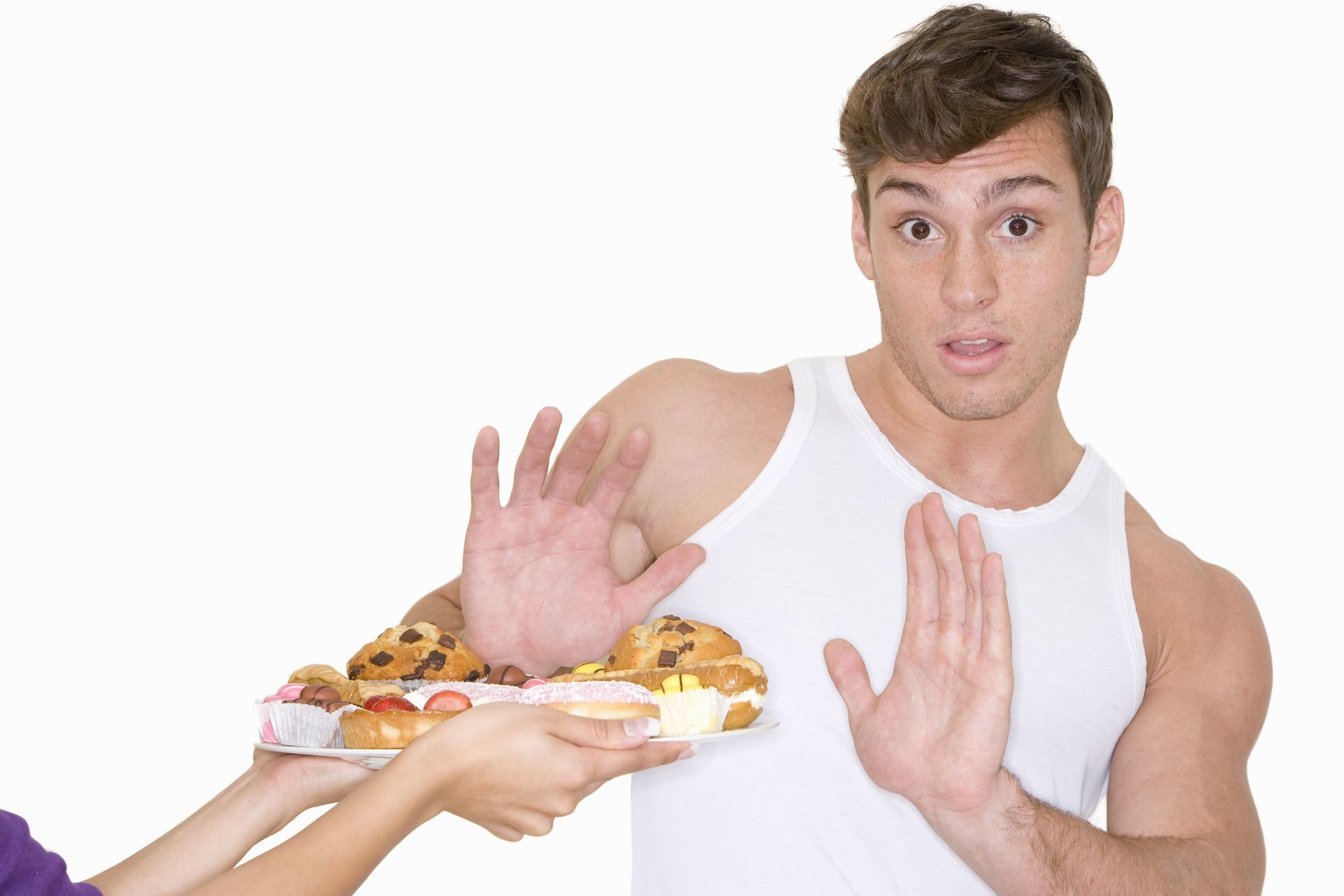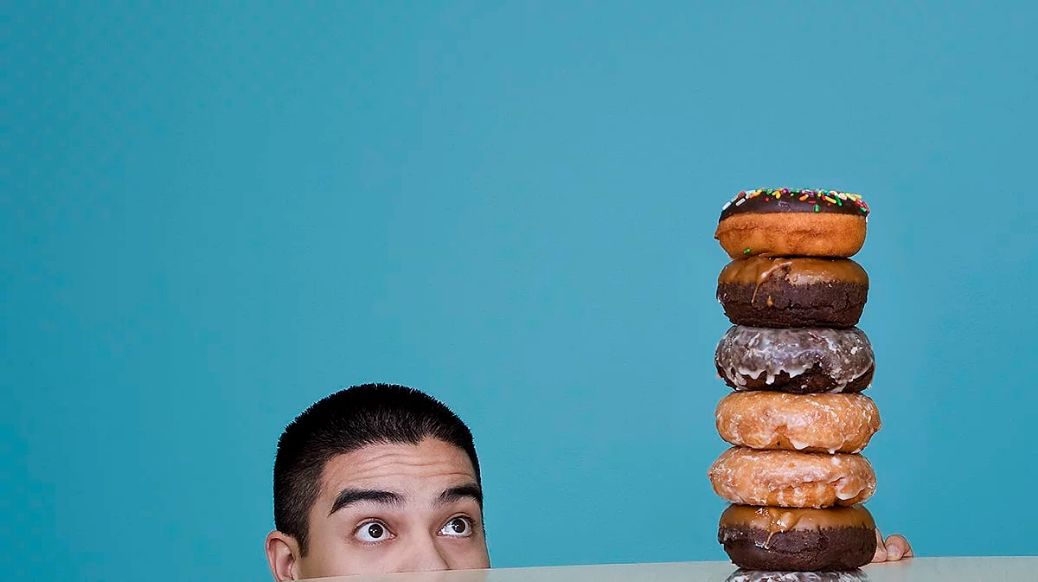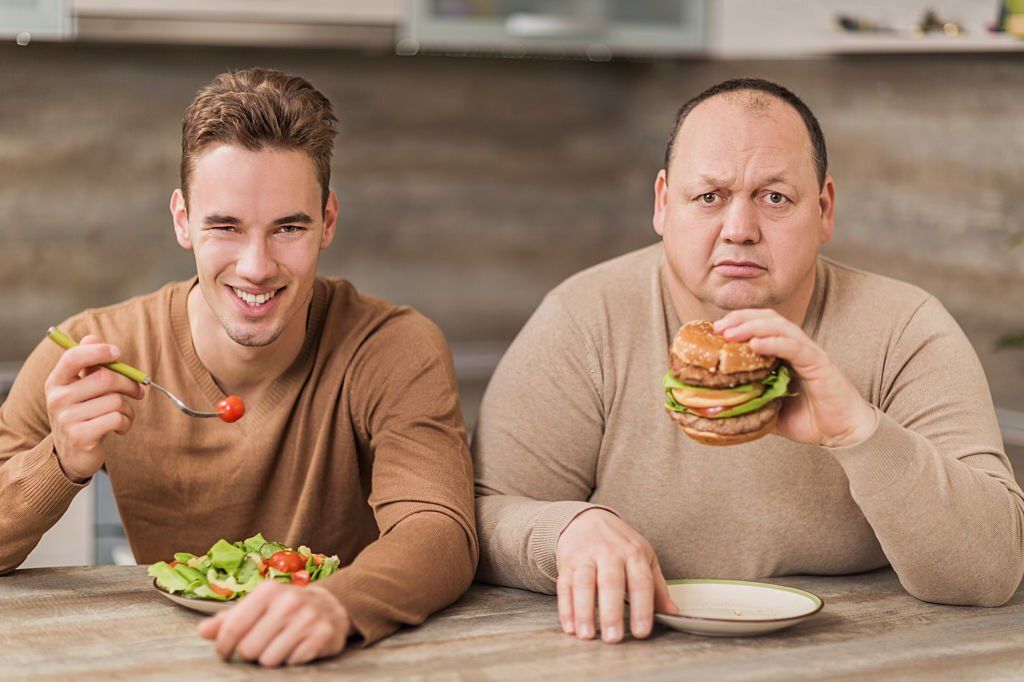GAY EATING DISORDERS
Why Gay Men Are 200% More Likely to Face Eating Disorders Than Straight Men
| Condition | Prevalence in Gay Men | Prevalence in Straight Men/Heterosexuals | % Increase in Prevalence |
|---|---|---|---|
| Eating Disorders | 15% | 5% | 200% |
Why are eating disorders more prevalent in the gay community?
Author & columnist, featured on HBO, NPR, and in The New York Times
Eating disorders are significantly more prevalent in the gay community, with up to 42% of eating disordered males identifying as gay, despite gay men representing only about 6% of the male population.
The pressures to achieve the so-called gay "ideal" physique, which is both lean and muscular, contribute to the high prevalence of eating and body image issues among gay men.
Michael Thompson, a 31-year-old event planner from Los Angeles, grapples with the relentless pursuit of an elusive body ideal, a struggle intensified by his immersion in a culture where appearance often dictates social acceptance.
"Every magazine I pick up, every ad I see, there's this image of a guy with the perfect abs, the right height, the ideal build. I know it's unrealistic, but part of me keeps pushing, trying every new diet, hitting the gym twice a day. It's like I'm chasing a ghost. Last year, I spiraled into anorexia, and I'm still fighting to find my way back," Michael confides, revealing the deep-seated pain of feeling perpetually inadequate.
Additionally, the larger context in which many gay men must live, including discrimination, stigma, and the pressure to conform to societal and subcultural standards of attractiveness, creates a perfect storm scenario for the development of eating disorders.
What are the specific risk factors for eating disorders in gay men?
Gay men face specific risk factors for eating disorders, including the pressure to achieve the ideal physique, experiences of discrimination and stigma, and the value placed on looks and sexual attractiveness within the gay subculture.
Research has also identified unsatisfied friendships and dissatisfaction in romantic relationships as risk factors for bulimia in gay men. The lack of a solid social support system can increase feelings of isolation and depression, leading some individuals to turn to food as an emotional substitute.
Elijah Brooks, a 27-year-old software developer from New York City, speaks to the loneliness and isolation that can accompany the struggle with body image. He told us:
"I remember going to this bar, a place where you'd think everyone would be welcoming, but all I could see were these groups of guys who all looked like they'd stepped out of a fitness magazine. And there I was, just me, feeling completely out of place. I started skipping meals, thinking that if I could just lose more weight, maybe I'd fit in better. It wasn't long before I was dealing with bulimia. It's not just about the food; it's about wanting to belong, to be seen."
How do societal pressures contribute to eating disorders among gay men?
Societal pressures, both within the larger culture and the gay subculture, significantly contribute to eating disorders among gay men. The emphasis on achieving the "ideal" physique, the value placed on looks and sexual attractiveness, and the stigma and discrimination faced by many gay men create a toxic environment that fosters the development of eating disorders. The pressure to conform to these standards, combined with the lack of social support, can lead to increased feelings of isolation and depression, further exacerbating the risk of eating disorders.
Daniel Rivera, a 35-year-old high school teacher from Chicago, highlights the internal conflict of desiring acceptance within his own community.
"It hit me hardest at a friend's wedding. All around me were these men, all seemingly perfect, and there I was, feeling like I just didn't measure up. It's not even about wanting to be with them; it's about wanting to be them. That's when my obsession with controlling my weight started. I thought if I could just look a certain way, I'd be happier, more accepted. But it led me down a dark path of binge eating and then purging. It's a cycle of hurt, where the pain of feeling undesirable is both the cause and the effect of my disorder."

How do experiences of discrimination and stigma impact the development of eating disorders in gay men?
Derek Hanson, a 32-year-old software engineer from Atlanta, faces the sting of discrimination in various aspects of his life, each instance chipping away at his sense of belonging and self-worth. At work, Derek overhears snide remarks about his sexuality hidden behind backhanded compliments about his "good taste" and "eye for design," implying that his professional skills are somehow tied to his sexual orientation. This constant undercurrent of workplace stigma leaves him second-guessing his contributions and achievements.
The discrimination extends into Derek's personal life, where even well-meaning friends unwittingly exclude him from traditional male bonding activities, assuming he wouldn't be interested in sports events or poker nights. This isolation from typical social gatherings reinforces a feeling of otherness, pushing Derek further to the fringes of his social circle.
The most painful blow comes from his own family. Derek was conspicuously left off the guest list for his sister's baby shower, a decision she awkwardly justified with a misplaced concern about him being gay, as if his presence would be inappropriate or unsettling for her more conservative in-laws. This deeply personal rejection strikes at the heart of Derek's struggle for acceptance, igniting a profound sense of alienation even in spaces that should feel safe and welcoming.
These cumulative experiences of discrimination and stigma at work, among friends, and within his family compound Derek's anxiety and depression. In his search for control amidst this turmoil, he turns to restrictive eating habits, a tangible aspect of his life he feels he can manage when so much else seems dictated by the prejudices of others. This pattern of eating becomes a coping mechanism for the rejection and isolation he faces, a way to exert some semblance of agency in a world that continually seeks to marginalize him.

Are there unique challenges that gay men face in relation to body image and eating habits?
Yes, including the pressure to achieve the "ideal" physique, experiences of discrimination and stigma, and the value placed on looks and sexual attractiveness within the gay subculture. These challenges create a hostile environment that significantly contributes to the development of eating disorders. Additionally, the lack of a solid social support system can further exacerbate feelings of isolation and depression, leading some individuals to turn to food as an emotional substitute.
The search results provide a comprehensive understanding of the factors contributing to the high prevalence of eating disorders in the gay community. The evidence highlights the need for increased awareness, support, and research to address this critical issue.
What role does participation in the gay community play in the prevalence of eating disorders?
Research has shown that while some measures of participation, such as attendance at gay recreational groups, were related to a higher prevalence of current subclinical eating disorders, a sense of connectedness to the gay community was related to fewer current eating disorders.
But wait, what's the difference between participation and connectedness?
PARTICIPATION
Alex Martinez, a 28-year-old pharmaceutical rep from Denver, has been an active member of various gay recreational groups for years. He attends events and meetups regularly, hoping to find his place within the community. However, Alex shares, "I go to these events, I'm there, but I don't feel like I'm really part of it. It's like I'm on the outside looking in. I see all these guys, fit and confident, and I can't help but compare myself to them. It started with just skipping a meal here and there, but it's become more than that now. I'm constantly worrying about my weight, my appearance. It's exhausting."
CONNECTEDNESS
Contrastingly, Jordan Kim, a 32-year-old nurse from Atlanta, describes a different experience. Despite participating less frequently in formal gay community events, Jordan feels a deep sense of connection through smaller, more intimate gatherings and online forums where he shares his experiences and supports others. "For me, it's not about how often I'm seen at the big events.
It's the late-night chats, the coffee meet-ups with friends, the safe spaces where we share our stories. That's where I feel a real sense of belonging. Knowing I'm not alone in my struggles has made a huge difference. I used to be so hard on myself about my body, but I've found acceptance and understanding here. It's helped me heal in ways I didn't expect."
These examples show that feeling connected to the gay community may have a protective effect against eating disorders. However, the specific nature of this connection and its impact on eating disorder prevalence requires further exploration.
What are the mental health implications of eating disorders for gay men?
The most impactful contributor to eating disorder development in gay men is mood disturbance, particularly the presence of depressive symptoms, which makes them more susceptible to eating disorders.
Additionally, the perception of stigma is directly related to eating disorder development, meaning that the fear or perception of being stigmatized for having a certain appearance or body type makes gay men more vulnerable.
Anxiety, depression, and trauma-related disorders often co-occur with eating disorders in gay men. Signs of an eating disorder in this population may include an excessive focus on body weight, changes in eating habits, and emotional volatility.
Furthermore, internalized homophobia can exacerbate body dissatisfaction, contributing to unhealthy eating behaviors. It is crucial for gay men struggling with eating disorders to seek help from healthcare providers specializing in LGBTQ+ mental health for a personalized treatment plan that meets their needs.
The relationship between mental health and eating disorders in gay men is complex and requires tailored insight and comprehensive support to address effectively. It is essential to advocate for better mental health coverage, including eating disorders, and to promote early detection and nuanced care that respects the intricacies of one's sexual orientation and identity.

What are the signs and symptoms of eating disorders that gay men should be aware of?
Gay men should be aware of various signs and symptoms that may indicate the presence of an eating disorder. These signs and symptoms can manifest in different ways and may include:
Unhealthy Eating Patterns: This may involve restrictive eating, such as consuming very low-calorie foods or only eating at specific times. It can also include secretive eating, such as sneaking food and eating in isolation.
Excessive Exercise Behaviors: Gay men with eating disorders are more likely than women with eating disorders to engage in excessive exercise behaviors. This may involve spending an unreasonable amount of time on exercise, such as working out for hours every day.
Preoccupation with Body Image: An excessive focus on body weight and shape, along with persistent dissatisfaction with one's appearance, can be indicative of an eating disorder.
Changes in Eating Habits: This may involve avoiding social situations that involve food, making excuses to avoid meals, or expressing anxiety or stress around eating.
Mood Disturbance: The presence of depressive symptoms, anxiety, or trauma-related disorders can often co-occur with eating disorders in gay men.
Physical Symptoms: These may include a significant change in weight, lowered testosterone, muscular weakness, and decreased interest in sex.
Use of Illicit or Prescription Drugs: It is common for people with eating disorders to use drugs to help reduce appetite and increase metabolism. This may involve the use of substances like cocaine, amphetamines, or diet pills.
Unhealthy Weight Control Behaviors: This can include self-induced vomiting, laxative abuse, or the use of other unhealthy methods to control weight.
Body Dissatisfaction and Internalized Homophobia: Gay men may experience heightened body dissatisfaction due to societal pressures and internalized homophobia, which can contribute to the development of unhealthy eating behaviors.
It is important for gay men to be aware of these signs and symptoms and to seek help if they or someone they know is exhibiting these behaviors. Early detection and intervention are crucial in addressing eating disorders and promoting positive mental health outcomes within the LGBTQ+ community.

What are the long-term effects of eating disorders on the health and well-being of gay men?
The long-term effects of eating disorders on the health and well-being of gay men can include:
Physical Health Consequences: These may include cardiovascular complications, gastrointestinal issues, electrolyte imbalances, and bone density loss. Over time, these physical health consequences can lead to chronic conditions and a reduced quality of life.
Mental Health Implications: Eating disorders often co-occur with anxiety, depression, and trauma-related disorders in gay men. This can exacerbate the overall mental health burden and lead to a higher risk of self-harm and suicide.
Social and Interpersonal Impact: Eating disorders can strain relationships and lead to social isolation. This can further exacerbate mental health challenges and make it more difficult to seek help and support.
Recovery Challenges: Long-term recovery from eating disorders can be complex and challenging. It often requires ongoing support, therapy, and medical care to address the physical and mental health implications.
Quality of Life: The long-term effects of eating disorders can significantly impact the overall quality of life for gay men. This may include limitations in daily functioning, reduced social engagement, and ongoing mental health struggles.
There's no better example of the long-term effects of eating disorders than to look at Ethan Parker, a 35-year-old event coordinator from San Francisco.
He has faced the brutal physical toll of battling anorexia for over a decade. Once an avid runner and hiker, Ethan's once-robust cardiovascular health has declined, leaving him with a persistent fatigue that makes even moderate exercise a daunting task.
Gastrointestinal issues plague his daily life, with bouts of severe indigestion and acid reflux disrupting not only his work but also his social engagements. The once-strong bones that carried him effortlessly up the steep trails of the Bay Area now show signs of density loss, a silent alarm for potential fractures that haunts his every step.
On the mental health front, Ethan's journey with an eating disorder is intertwined with crippling anxiety and a deep-seated depression that colors his every interaction. Social gatherings, once a source of joy, have become minefields of potential triggers, leading to an ever-shrinking world where isolation feels safer than the vulnerability of connection.
The trauma of repeated microaggressions, both within and outside the gay community, has left scars that no amount of therapy seems to fully heal, perpetuating a cycle of self-doubt and despair that makes recovery feel like a distant, unattainable dream.
Ethan's relationships, too, bear the brunt of his struggles. His long-term partner, Alex, finds himself navigating the tightrope between supporting Ethan and mourning the loss of the vibrant man he fell in love with.
Plans for social outings with friends or family gatherings are often abandoned, as Ethan's fear of judgment or the temptation to fall back into harmful eating habits looms large, straining even the strongest of bonds.
Recovery, for Ethan, is a road marked with relapses and victories in equal measure. The comprehensive care he needs—ranging from nutritional counseling to address his physical ailments, to intensive therapy for his mental health struggles—is a constant reminder of the toll his eating disorder has taken on his life. The financial and emotional investment in treatment is a testament to his resilience, but also a stark indicator of the complexities involved in healing.
The cumulative impact of Ethan's eating disorder on his quality of life is profound. Professional ambitions have been sidelined by the need for medical leave, and hobbies that once filled his weekends with joy are now distant memories. The vibrant social life that defined his youth is replaced by a cautious, guarded existence where every meal, every interaction, is weighed against its potential impact on his fragile state of recovery.
For Ethan, and many like him, the journey through an eating disorder is not just a battle with food or body image; it's a fight for a life that feels whole, connected, and free from the shadows of his condition.
Resources
The National Association of Anorexia Nervosa & Associated Disorders
The Alliance for Eating Disorders Awareness Helpline
- Phone: 1-866-662-1235
- Website: https://www.allianceforeatingdisorders.com/
National Eating Disorders Association
The Center for Mindful Eating
Eating Recovery Center
FEDUP Collective
- Website: https://www.fedupcollective.org
(organization for people with eating disorders, with a focus on marginalized communities)
The Body Positive
(body-positive activism organization)
